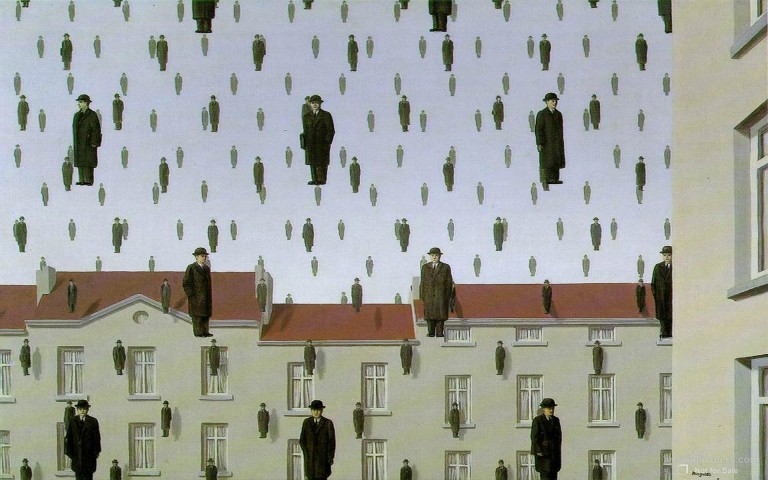“The world is a dangerous place to live; not because of the people who are evil, but because of the people who don’t do anything about it.”
Albert Einstein
The story that follows is not, unfortunately, fictional. It seems as if it was derived from a horror movie, especially when we are informed that it took place on a Friday the 13th; Friday 13, 1964 to be precise.
It was approximately three o’clock in the morning when Catherine Genovese was coming back home from her night shift. She lived in Queens, New York at a densely populated urban area. There, in the shadows, she took notice of a man – who struck her as suspicious – and turned around to get in her car or call the police.
She didn’t make it. The man, whose name was Winston Moseley, overtook her and stabbed her in the back with a knife.
Catherine started screaming: “Oh my God, he stabbed me! Help me!”
Some lights were turned on at the nearby residencies and the curtains were pulled back; but no one got out to see what was going on.
Later, Moseley confessed in his testimony: “I felt that none of these people would go down the stairs.”
And so it happened. Only a man yelled: “Leave the girl alone!”
Then Moseley quickly left the scene and Catherine dragged herself to the entrance of her house.
~~
But all lights went out again. Moseley moved in on Catherine and stabbed her again. She screamed once more for help and once more the lights were turned on, but no one said a word, nobody got out.
Moseley walked away and waited. A few minutes later, he drew near the girl who was still breathing and finished her off by cutting her body open from the throat to the genitals. Then he lowered his trousers and molested the dead body. This heinous criminal act took 35 minutes. The fist attack occurred at 3:15 and Moseley left at 3:50.
38 witnesses saw the girl being stabbed to death three times without lifting a finger, without even calling the police.
The police was notified at four in the morning but when they arrived it was too late; for everyone.
~~
Perhaps this case would have got lost in the police files hadn’t two social psychologists, John Darley and Bibb Latané, learned about it. They became interested not in the murderer’s perverted personality, but in something else that was more shocking: the apathy of bystanders, their unwillingness to help. What was it that held them back?
Some psychologists and psychiatrists spoke of the “emotional refusal” of the witnesses, namely that they stood passive, disinterested because they were shocked. Another one stressed the negative impact of the TV which has exposed the viewers to violence and social apathy and thus they have become inured to them.
But Darley and Latané were not convinced. They knew it in their bones, although they could not prove it yet, that this behavior had nothing to do with TV or emotional breakdown but with something deeper, perhaps more primitive.
So they proceeded to their famous experiment which demonstrated the concept of “diffusion of responsibility”. Obviously, they could not stage a murder, so they opted for a seizure.
~~
A student sat alone in a booth with a pair of headphones and a microphone. They would talk for two minutes about the difficulties they face in student life, after they would have listened to the other students, in other booths, speaking about their own life.
As it is obvious – to us who know the purpose of the experiment – there was no other student aside the subject; the voices they were hearing, were actuelly recorded.
At some point, it was the turn of a “student” who said that he was an epileptic, something that caused him problems, etc…
Suddenly the epileptic actor had a seizure and asked for help: “I think I’m having a seizure…help me…I’m dying…”
The fake seizure lasted for six minutes. During this period, a mere 31% of the students that were listening got up and asked for help from the supervisor.
The rest 69%, of the students although they were upset – therefore proving wrong the hypothesis of apathy and the stupefaction that television provides – they did not know what to do. They expected that someone else would deal with the epileptic, so they did nothing.
~~
The “diffusion of responsibility” became clearer when the experimenters modified the number of the students (recorded voices) that participated.
When the subject was under the impression that they were alone with the epileptic student, they asked for help within three minutes – more precisely the 85% did so.
Darley and Latané’s conclusion was:
“The larger the number of the witnesses of an unpleasant incident, like an attack or an accident, the less responsible each individual feels because the responsibility is being equally diffused into the crowd.”
~~
In other words, it is a misconception to feel safer among a bigger crowd, like a city’s population. It is more likely to get help by your one and only neighbor than all these people – who, usually, are also strangers – who are crammed into the building blocks around you and pass before you in the teeming streets.
It is no coincidence what the poets say: we become lonelier in the crowd.
~~
But Darley and Latané drew one more conclusion, more optimistic by conducting another experiment which I am not going to describe now, even though it is just as interesting: Solidarity can be taught.
If a man simply hears of the “diffusion of responsibility”, the next time that something takes place “before their very eyes” will be ready to act otherwise.
It is more likely not to ignore the old man who fell in the street simply because some other people already stand over him, thinking to himself: “Let them help him, I can’t do more than that.”
It is more likely not to leave a woman or a child or a stranger or a dog that are getting beaten helpless in the belief that it is not their responsibility – since so many bystanders are doing nothing.
Because they know that we are all responsible – equally, no diffusion – for anything wrong in our society and they do not want to be one of the 38 witnesses that let Moseley butcher Catherine Genovese.
If the conclusions of Darley and Latané are correct, even this worthless article can do its bit to help the next Catherine Genovese to survive.
~~~~~~~~~~~~~~~~~~~~~~
(If you want to know more about Darley and Latané’s experiment, read Opening Skinner’s Box: Great Psychological Experiments of the Twentieth Century by Lauren Slater)
~~~~~~~~~~~~~~~~~~~~~~~~









